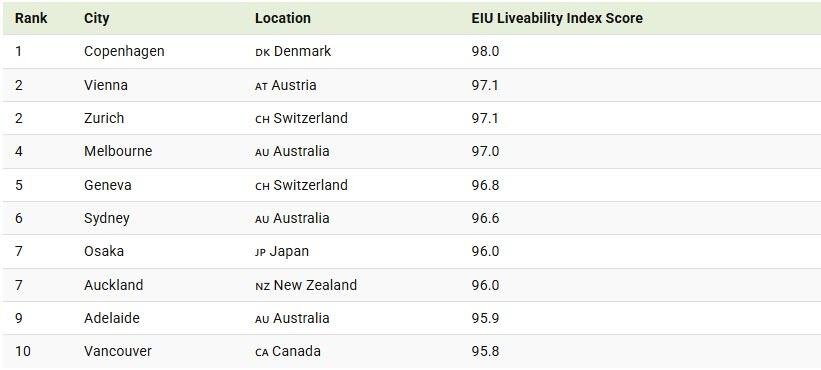Each year, The Economist evaluates cities globally based on their livability, considering factors from crime and conflict to public transportation and education.
This map, created by Visual Capitalist’s Kayla Zhu, highlights the 10 most livable cities for 2025, as per The Economist Intelligence Unit’s Global Liveability Index. The index assesses over 30 factors across five categories to determine overall livability:
- Stability: Rates of crime, terrorism, military conflict, and civil unrest
- Healthcare: Access to and quality of public and private healthcare, general health indicators
- Culture and Environment: Climate ratings, cultural and sporting opportunities, social or religious restrictions
- Education: Access to and quality of public and private education
- Infrastructure: Quality of roads, public transport, international connections, availability of housing
What is the Most Livable City in the World?
According to The Economist, Copenhagen has claimed the title of the most livable city, ending Vienna’s three-year reign at the top. Denmark’s capital achieved perfect scores of 100 in stability, education, and infrastructure, resulting in an overall score of 98.

Vienna and Zurich are tied for second place, each scoring 97.1. Switzerland, with two cities in the top 10, is also recognized as the leading destination for migration in 2025. Vienna’s stability scores took a hit following a bomb threat before a canceled Taylor Swift concert and a planned attack on a train station earlier this year.
Cities in Western Europe and the Asia-Pacific region continue to lead the rankings. Vancouver stands as the sole North American city in the top 10 after Calgary experienced the largest drop, falling from fifth in 2024 to 18th in 2025 due to declining healthcare scores.
The average livability score for 2025 remains at 76.1 out of 100, consistent with 2024. However, stability scores have continued to fall against a backdrop of escalating geopolitical tensions and civil unrest globally.

